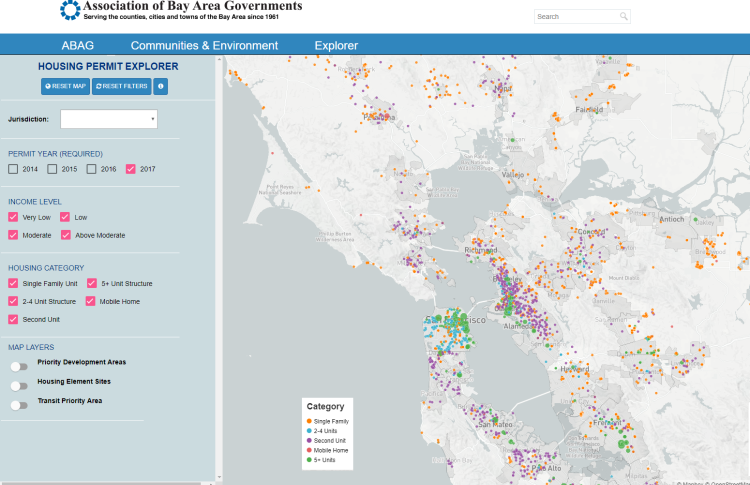
New data on housing.abag.ca.gov reveals Bay Area cities and counties permitted 27,103 new housing units in 2017, more than either 2016 (20,868) or 2015 (20,495); but only 18 percent of these units were for very-low-, low- or moderate-income residents -- far below the 58 percent required by the state's Housing and Community Development Department. A new report summarizing the 2017 data, is available on https://abag.ca.gov/planning/housing/publications.html. as Bay Area Housing Permit Activity Report, 2015-2017.
"With this new data, we can clearly see that more housing development is on the way, but we're still far behind in meeting the housing demand for all income levels," commented ABAG President and Sonoma County Supervisor David Rabbitt. "The work that is being done at ABAG and at MTC in the Committee to House the Bay Area, known as CASA, is urgently needed to bring Bay Area leaders together to solve this problem."
The housing data portal now includes complete datasets for 2014, 2015, 2016 and 2017; and will continue to be updated to incorporate cities' and counties' housing permit and policy activities from 2018 as well as future years. These datasets provide a resource to shape both the development and evaluation of Bay Area governments' housing policies, and will help support the Metropolitan Transportation Commission (MTC)'s funding initiatives.
These initiatives include the One Bay Area Grant program and the new Housing Incentive Pool challenge grant program that are linked to cities' and counties' results in permitting, producing and preserving housing. MTC established the Housing Incentive Pool to reward local governments that permit or preserve the greatest number of housing units at the moderate-, low- and very-low income levels.

